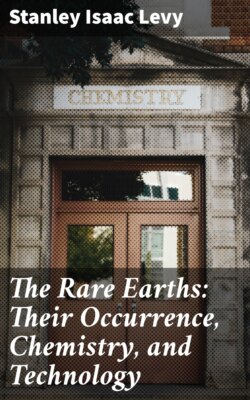Читать книгу The Rare Earths: Their Occurrence, Chemistry, and Technology - Stanley Isaac Levy - Страница 169
На сайте Литреса книга снята с продажи.
Beckelite.
Оглавление—This is a mineral similar in composition to eudialyte, though not so complex, and of more recent discovery.[54] It is a silicate of ceria earths and lime, in which zirconia replaces silica; the oxygen ratio (i.e. ratio of oxygen in basic oxides to oxygen in acid oxides) is 3: 1, and the formula Ca₃R´´´₄(Si,Zr)₃O₁₅, where R = rare earth metals, chiefly of the cerium group. It is thus a salt of an acid H₁₈Si₃O₁₅ [= 3H₆SiO₅ = 3(3H₂O,SiO₂)] with zirconium and silicon vicarious.
[54] Abstr. Chem. Soc. 1905, 88, ii, 177.
The crystals appear to belong to the cubic system, occurring in cuboid grains, and in octahedra and dodecahedra. It is brown, and isotropic, with cubic cleavage. Sp. gr. = 4·15.
It is soluble in hot hydrochloric acid, even after ignition; the solution gives the turmeric test for zirconium.
It was found in a dyke in an ælæolite syenite, near the Sea of Azov.
The following minerals (see list) are also to be placed in the class of mixed silicates:
Arfvedsonite and cataplejite, complex zircono-silicates.
Hiortdahlite (Guarinite) and Lavenite, zircono-silicates with fluorine.
Caryocerite, Melanocerite and Steenstrupine, complex fluosilicates.
Auerlite, Britholite, Erikite and Florencite, phospho-silicates.
Cappelenite, Homilite and Tritomite, boro-silicates.
